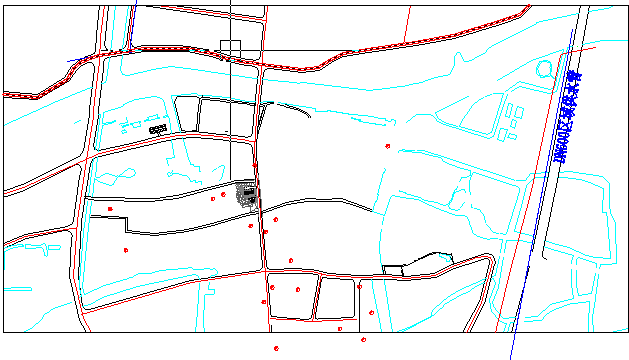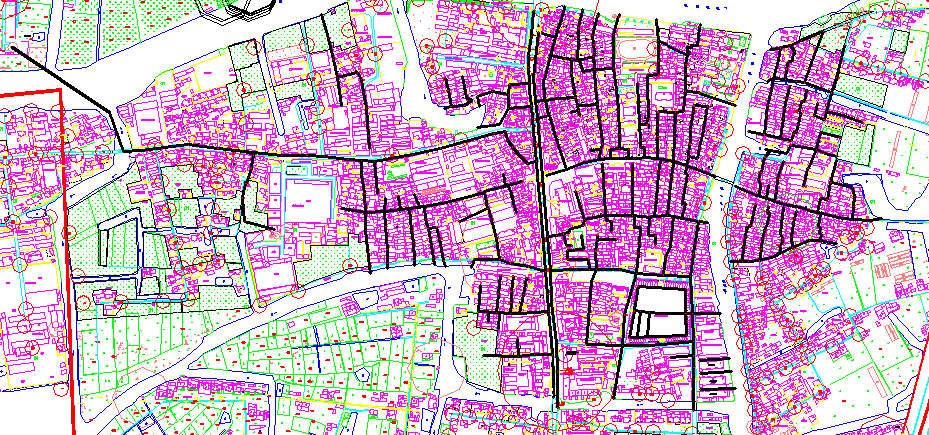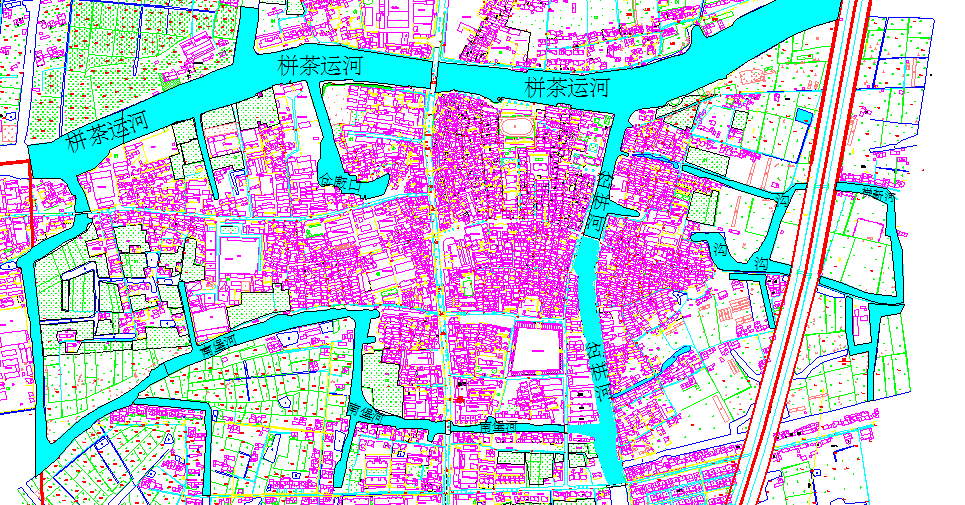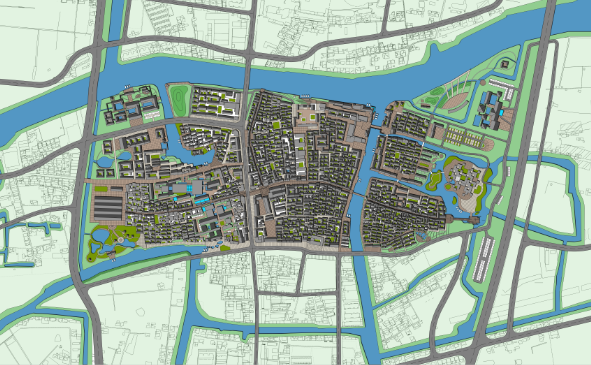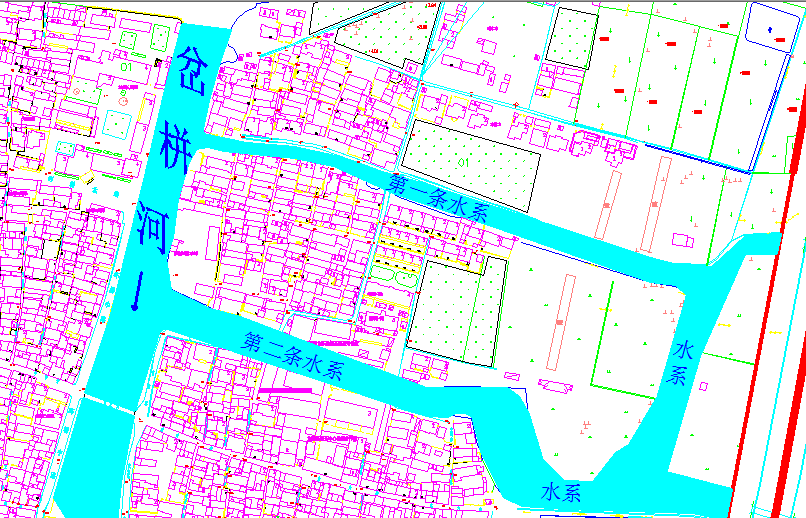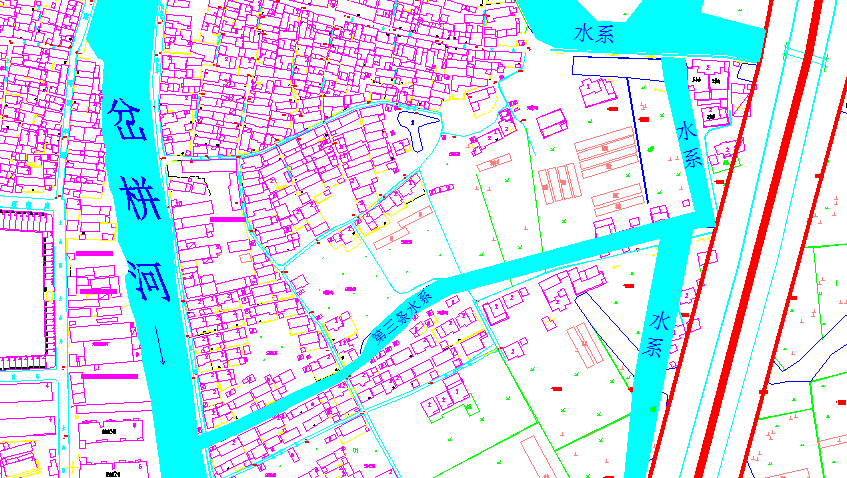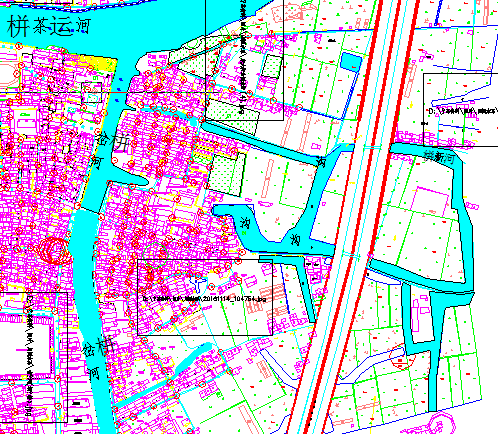苏东古镇给排水管网改造及污水处理工程设计毕业论文
2020-06-20 19:04:29
摘 要
本文首先对栟茶古镇的基本概况、水系现状、给水管网现状、消防现状、雨污合流制管网现状进行了介绍;根据古镇的现状以及对未来发展的要求,突出水文化特色,并尽可能提高原有管线利用率,减小施工量,依次对古镇的水系改造规划、给水管网、消火栓增设、排水管线、雨水管线进行了改造方案的设计、计算和比选;为响应国家创建海绵城市的号召,对古镇雨水的收集与利用提出了一系列方案与设想,保留古镇原有的水系特色,对石板街进行改造和通水量校核;最后设计了东片区的污水湿地处理方案,详细计算校核湿地面积、补水量、水循环路径以及出水水质。
关键词: 管网改造 污水湿地处理 管网现状 古镇
Transformation of water supply and drainage network and Sewage Treatment Project of an ancient town in east Jiangsu Province
Abstract
Firstly, the basic situation of the town, the status quo of the water system, the status quo of the water supply network, the current situation of the fire and the current situation of the rain and sewage confluence pipe network are introduced in this paper. Then according to the present situation of the town and the requirements for future development, and in order to highlight the characteristics of water culture, increase the utilization rate of the original pipelines and reduce the amount of reconstruction, the paper designs, calculates and compares the ancient town of water system planning, water pipe network design, the amplification of fire hydrants,drainage pipes design,rainwater pipeline transformation programs. In response to the call to create a sponge city,it puts forward a series of schemes and ideas for the collection and utilization of rainwater. To retain the original town of the original characteristics of the water, it transforms the stone streets and checks the water flux.Finally,it designs the sewage treatment program of eastern area,and check the wetland area, water replenishment, water circulation path and effluent quality.
Key Words: Pipe network transformation; Sewage wetland treatment; Pipe network status quo; Ancient town
目 录
摘 要 I
Abstract II
第一章 基本资料 1
1.1 基本概况 2
1.1.1 区位条件 2
1.1.2自然条件 2
第二章 水系及给排水管线现状 6
2.1古镇水系现状 6
2.1.1流域现状 6
2.1.2各水系现状 7
2.1.3存在问题 8
2.2 给水现状 9
2.2.1给水管网现状 9
2.2.2消防栓现状 10
2.3雨水现状 11
2.3.1雨水收集现状 11
2.3.2古镇的天水茶 11
2.3.3存在问题 11
2.4排水管线现状 12
2.4.1石板街下的排水暗沟 12
2.4.2其他污水干管 13
2.4.3污水处理厂 14
2.4.4现状分析及评价 14
2.5公共厕所 14
第三章 镇区水系改造规划 16
3.1 东大街水系规划 16
3.2 岔栟河水系规划 16
3.3 南堡河水系规划 16
3.4 东片区湿地规划 17
第四章 古镇给水及消防规划 21
4.1 给水管网定线 22
4.2 用水量计算 23
4.2.1 地均指标法 23
4.2.2 人均综合用水指标法 26
4.2.3 结论 27
4.3 设计流量分配与管径设计 27
4.3.1 计算节点流量 27
4.3.2 管段设计流量计算和管段直径设计 29
4.4 水力分析 30
4.4.1 设计工况水力分析 30
4.4.2 控制点确定与节点水头调整 31
4.5 管网设计校核 31
4.5.1 消防工况校核 31
4.5.2 事故工况校核 33
4.6 消火栓系统及管道设计 34
4.6.1消火栓系统设计要求 34
4.6.2管道设计 36
4.7 新旧管网设计比较 36
第五章 古镇排水规划 38
5.1 污水量预测 38
5.1.1 地均污水指标法 38
5.1.2 人均综合指标法 39
5.1.3 结论 39
5.2 污水收集分区 40
5.3 污水收集系统 42
5.3.1 污水收集系统布置原则 42
5.3.2 污水管网定线 43
5.3.3 污水处理厂 44
5.3.4 现状污水设施改造 44
5.4 水量计算与水力计算 45
第六章 雨水管网设计改造 60
6.1 划分排水流域和管道定线 60
6.2 设计管段和沿线汇水面积 60
6.3 确定设计计算基本参数 61
6.4 海绵城市建设 62
6.5 确定管渠的基本参数 62
6.6 水力计算 62
6.7 新旧管网比较 73
6.8 石板街改造方案 84
6.9 石板街下暗渠改造方案 85
6.9.1 根据过水断面面积核算 85
6.9.2 根据管道输水能力核算 89
6.9.3 石板街下排水暗渠内部改造 90
第七章 湿地处理 91
7.1 湿地处理设计基本参数 91
7.1.1 设计生活污水水量 91
7.1.2 设计生活污水水质 93
7.1.3 湿地水平衡计算 97
7.1.4 污水排水接纳资料 100
7.1.5 场地现状及未来规划 100
7.1.6 设计原则 101
7.1.7 规划成果 102
7.2 方案的确定 107
7.2.1湿地概述 107
7.2.2 湿地净化机理 107
7.2.3湿地的工艺特点 110
7.2.4 湿地分类 111
7.2.5 预处理设施选择 112
7.3 湿地污水预处理系统工艺设计 114
7.3.1 细格栅 114
7.3.2 调节池 120
7.3.3 污水提升泵 122
7.3.4 埋地式生活污水处理设备 126
7.5 湿地污水处理系统工艺设计 129
7.5.1表面流湿地 129
7.5.2湿地表面积的校核 129
7.5.3 湿地床有效容积 130
7.5.4 水力停留时间 130
7.5.5 水力坡度 131
7.5.6 工艺材料安装 131
7.5.7 湿地填料的布置原则 132
7.5.8 湿地填料选择 133
7.5.9 植物选用原则 133
7.5.10 湿地床植物栽种 134
7.5.11 湿地床布水方法 136
7.5.12 湿地污水系统的运行与管理 139
7.6 湿地水处理的平面与高程布置 141
7.6.1 平面布置 141
7.6.2 高程布置 143
7.7 古镇管网改造及污水湿地处理带来的效益 144
7.7.1环境效益 144
7.7.2经济效益 144
7.7.3 社会效益 144
参考文献 146
致谢 147
第一章 基本资料
1.1 基本概况
1.1.1 区位条件
苏东古镇区位优势得天独厚。道路通达,河流纵横。一条运河横贯东西,北凌河、江海河、浒洋河畅通无阻。即将开通的铁路将在镇域南部通过,并在镇南街口设客货两用站。
1.1.2自然条件
1. 气象气候
古镇地处长江三角洲北翼,为亚热带气候。古镇的气温特点为:春季气温高,夏季无酷暑,秋季气温低,冬季为暖冬,年平均日照2153小时,年平均气温 14.9℃,极高气温38.3℃,历年平均无霜期140.9天。
古镇濒海临江,受海洋调节和季风环流的影响,多年平均降雨量 1028.3毫米,降雨量年内分配不均,汛期(6-9月)雨量相对集中,约占年总降雨量的55-80%。
常年主导风向为东南偏东风,平均风速3.7米/秒。
2. 地形地貌
古镇镇地势平坦,南高北低,区域河塘水面较多,运河贯穿镇区,地面标高在4.0-5.0米之间(黄海高程系,下同),陆地地貌是典型滨海平原,分属三角洲平原区和海积平原区。
(1) 三角区平原区
相关图片展示:
